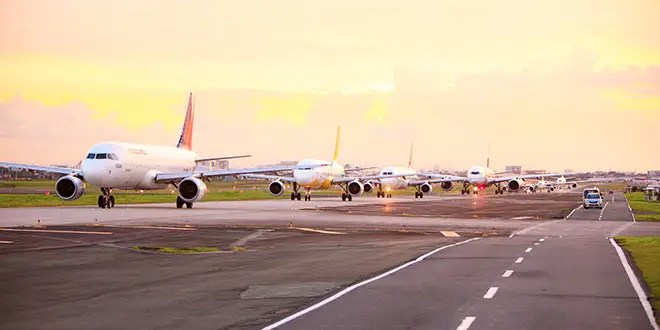Demand for air travel continues to soar as shown by the reported 11% increase in air passenger traffic in the Asia-Pacific region from January to August 2025, as the number of leisure and business trips reach new levels despite tariff-induced setbacks.
According to the latest Association of Asia Pacific Airlines (AAPA) report, Asia-Pacific airlines carried 258.04 million passengers in the first eight months, compared to the 232.89 million passengers in the same period in 2024.
Carriers reported a 12% increase in revenue passenger kilometers (RPK) by end of August driven by longer-haul markets. RPK determines the number of kilometers traveled by a paying passenger.
The average load factor in the eight-month period stood at 82.2%, compared to last year’s 81.6%, indicating that the number of seats booked against total capacity increased this year.
AAPA’s data comes from 37 carriers based in Asia Pacific, including Philippine Airlines (PAL), Cebu Pacific and AirAsia.
AAPA Director General Subhas Menon said the strong figures reflect the continued growth in international passenger demand “on the back of strong business and leisure travel activity across the region and globally.”
With four months left in the year, Menon said the region’s carriers remain optimistic that travel demand will stay resilient.
He noted that the steady growth will be “underpinned by continued expansion in global economic activity, particularly in Asia.”
“On the cargo front, the near-term outlook is likely to be shaped by further developments in global trade policy and inventory cycles,” said Menon.
By the end of August, international air cargo demand—as measured in freight tonne kilometres (FTK)—grew by six percent, with offered freight capacity growing by seven percent.
Menon said the strong activity in cargo, particularly in August, was driven by stockpiling activity as firms sought to mitigate the impact of tariff-related price pressures.
“Shifts in trade flows, driven by higher tariffs, also lent support to cargo traffic growth from the region’s major manufacturing hubs,” he said.
The United States imposed on Aug. 7 reciprocal tariffs on the majority of its trading partners. The Philippines was slapped with a 19% tariff rate.
Menon said that despite these protectionist measures, coupled with supply chain constraints, the passenger and cargo markets remain resilient.
He said airlines should not be complacent, instead focus on remaining agile in responding to market demand while maintaining vigilance in cost management.
“Overall, Asia Pacific airlines are well-positioned to navigate the wider economic and operational challenges that present themselves in the coming months,” Menon said.
 The Market Monitor Minding the Nation's Business
The Market Monitor Minding the Nation's Business

